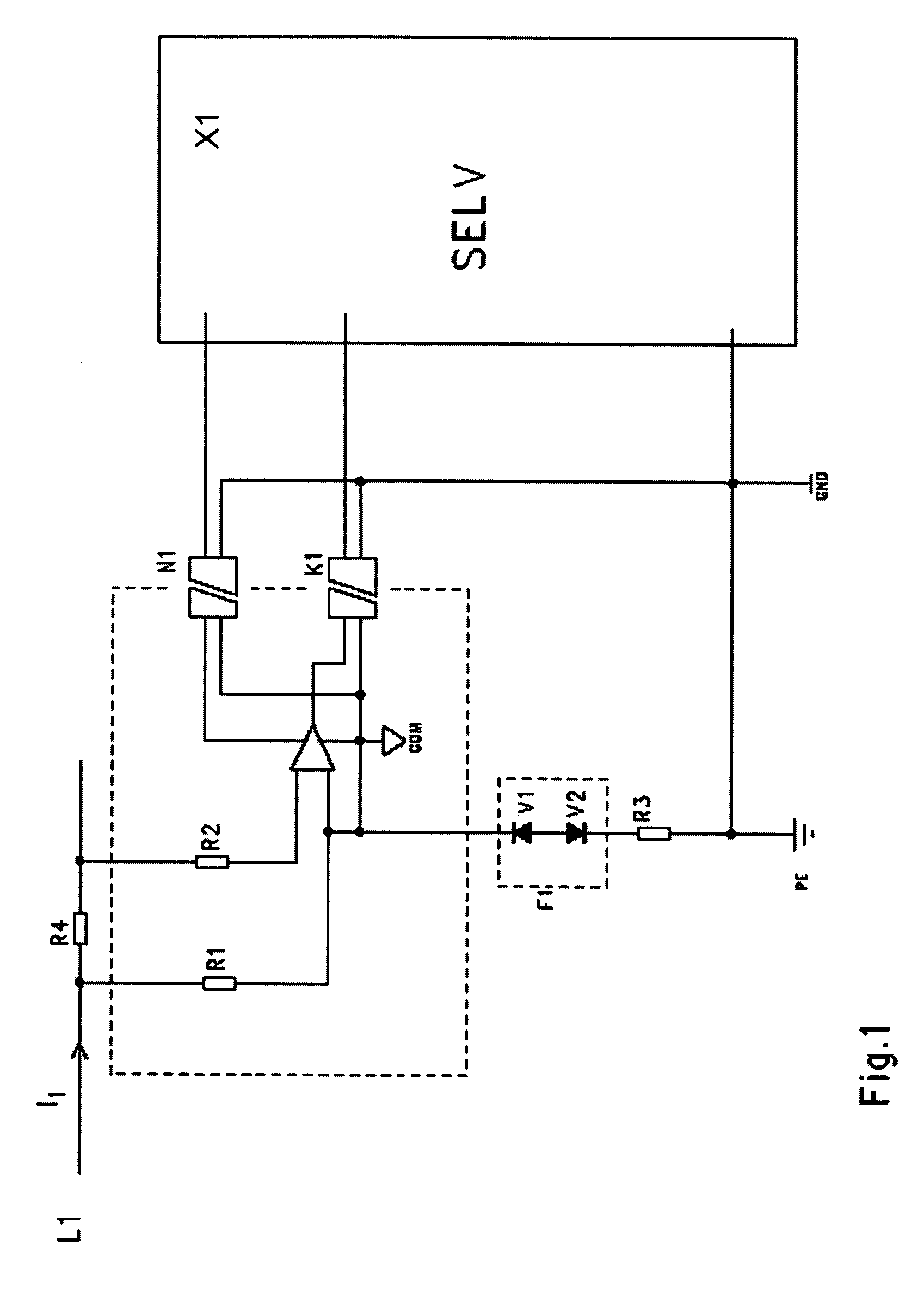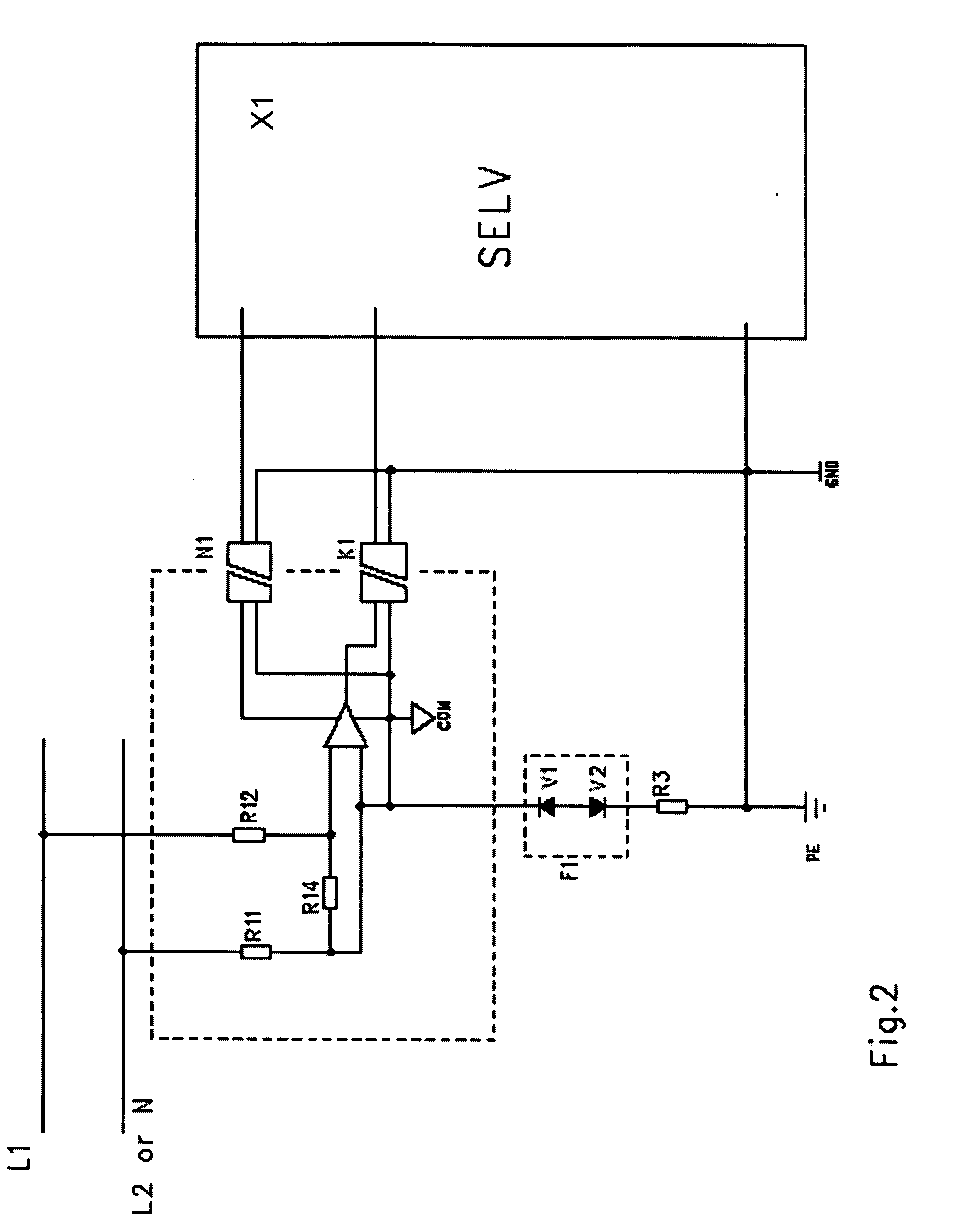Earthing and overvoltage protection arrangement
a protection arrangement and overvoltage technology, applied in the direction of overvoltage protection resistors, emergency protection arrangements for limiting excess voltage/current, and arrangements responsive to excess voltage, etc., can solve the problems of large size and high price of transformers, heavy transformers and their electric connections may become detached from printed circuit boards, and signal and power supply components suitable for selv interface of conventional floating solutions are expensive or not available at all
- Summary
- Abstract
- Description
- Claims
- Application Information
AI Technical Summary
Benefits of technology
Problems solved by technology
Method used
Image
Examples
Embodiment Construction
[0015]FIG. 1 illustrates an exemplary arrangement in connection with single-phase current measurement. The circuit under measurement includes a low (typically 1 . . . 100 mΩ, or lesser or greater) series resistance (R4), and the current (I1) in the circuit is determined on the basis of Ohm's Law by measuring the voltage drop across the resistance. The input of the measurement electronic circuit includes high resistances (R1, R2), typically 10 MΩ.
[0016] The artificial neutral point (COM) of the measurement electronics part, separated by a dashed line in the figure, is connected to the potential of the live conductor through one of the resistances (R1). Power supply to the measurement electronics can be arranged from the SELV electronic circuit (X1) using a DC / DC converter (N1) with sufficient dielectric strength, for example 3 kV.
[0017] The measurement result is either transmitted in analogue form through an opto-isolator (K1) to the SELV electronic circuit or, alternatively, the a...
PUM
 Login to View More
Login to View More Abstract
Description
Claims
Application Information
 Login to View More
Login to View More - R&D
- Intellectual Property
- Life Sciences
- Materials
- Tech Scout
- Unparalleled Data Quality
- Higher Quality Content
- 60% Fewer Hallucinations
Browse by: Latest US Patents, China's latest patents, Technical Efficacy Thesaurus, Application Domain, Technology Topic, Popular Technical Reports.
© 2025 PatSnap. All rights reserved.Legal|Privacy policy|Modern Slavery Act Transparency Statement|Sitemap|About US| Contact US: help@patsnap.com



